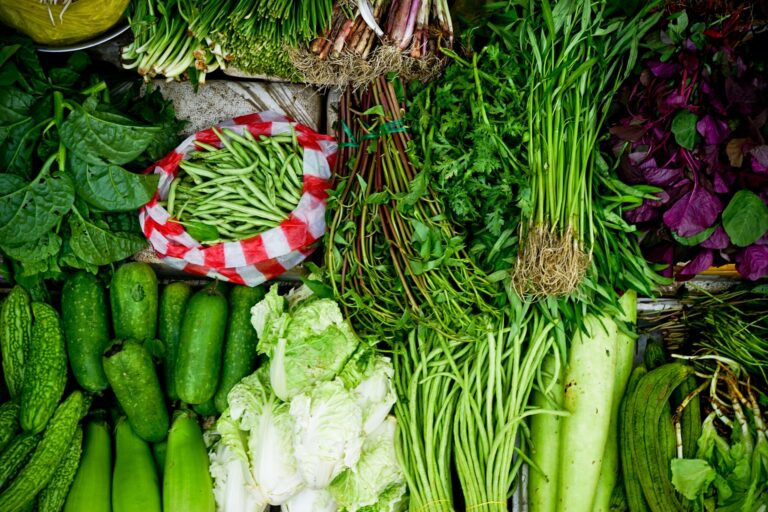Plastic is a huge problem. We are swimming in plastic (quite literally) and I’m sure you don’t need me to fill you in on how sometimes, from rising temperatures and sea levels to the extinction of certain species, it can seem like the Earth is truly screwed, and our dependence on single-use plastics isn’t helping.
There are some small steps you can take to help cut down on your personal plastic consumption and one of the best places to start is in the kitchen. Here are 5 simple ways to cut down on kitchen waste.
5 simple ways to cut down on kitchen waste
Ditch the plastic bags, cling film and foil
There are plenty of reusable alternatives to plastic food bags, cling film and foil on the market these days, and they’re actually pretty decent, although the initial outlay can be a little on the pricey side. But if you are able to get hold of these things (either by buying new, or finding them second-hand), the upside is that you will never go to wrap up your leftovers only to discover that you forgot to buy cling film in the weekly shop.

Lunchboxes
A lunchbox is a must if you’re taking lunch to work or out and about. You don’t need single-use plastic sandwich bags or foil to keep your sarnies fresh, a good, tightly-sealed lunchbox is all you need. Sistema do a few, including this pack of 3 sandwich boxes, or this box which lets you pack a snack or two alongside the main event
Or if eliminating plastic entirely is your goal, you can get a very stylish stainless steel sandwich box here.

Beeswax wraps
If you use foil for wrapping leftovers or covering plates or bowls, reusable beeswax wrap is an ideal solution. They’re made with cotton, jojoba oil and (you guessed it) beeswax and make for a hard-wearing reusable alternative – all you need to do to get it to mould around the thing you’re covering is to use the heat from your fingertips, and when you’re done using it just bung it in with the washing up, leave to dry and it’s ready to go again. They can be expensive but should last you a good few years if you care for them properly. You can also make your own if that’s your kind of thing, but apparently it is fiddly and messy work.
Reusable straws
If you regularly use straws, investing in a little set of reusable steel straws makes total sense. They’re fairly cheap, can go in the dishwasher and it means you won’t be needlessly sending heaps of plastic to landfill. Another benefit I’ve found is that stainless steel straws make your drink feel colder than it is, a plus when using a straw with cans of fizzy (diet, natch) drinks. Most sets also come with teeny tiny brushes for cleaning them, which is handy.


Try and take the non-plastic option
How many times have you bought fruit or veg in a totally unnecessary plastic bag (which then, frustratingly, can’t be recycled)? It’s not too difficult to avoid these bags, for example by choosing loose bananas over bagged ones, buying your mushrooms in those little paper bags, or if you’re fortunate enough to live near a greengrocer, shopping there for your fresh produce instead of at a major supermarket.
In a move to reduce the amount of plastic used to package and sell meat, Morrisons now encourages customers to bring in their own tupperware when buying from the fresh meat and fish counters, and if you’ve got a large Holland and Barrett nearby then you might find they have stations where you can refill glass oil bottles and fill containers with loose nuts, seeds and dried fruits.
Some areas have entire zero-waste shops, where the goal is to use no packaging at all. This is wildly dependent on where you are in the country, though. In my neck of the woods, there is nothing whatsoever, but Sheffield (to pick an area at random) has a few great-sounding options.
This website, The Zero Waster, has a comprehensive guide to the shops that offer low-waste options, as well as some excellent articles that will be of interest if you want to cut down on your waste.
Stop using kitchen roll and antibac wipes
These two have previously been total musthaves for keeping my kitchen clean, but when I stopped and thought about it I realised that it was creating a hell of a lot of waste. If you use antibac wipes, the easy and obvious switch is to buy antibac spray (I like Method’s citrus kitchen cleaner – yes, I have a favourite cleaning product, and yes this makes me feel ancient) and a few cloths that can be bunged in the washing machine when needed.
As for kitchen roll, you can use tea towels, cut up old bits of fabric or you could buy reusable kitchen roll if you must (this looks like kitchen roll and is made from bamboo, and each towel can be reused over 80 times).
Small steps are better than none
Of course, this all comes with the big caveat that you are in a position to do these things. You might not be able to afford to buy things like beeswax wraps, or to make the extra trip to the greengrocers/butchers/fishmonger. You might not have any eco-friendly shops nearby, or you might have other reasons for wanting to keep using single-use items. There is no one-size-fits-all solution. All you can do is your best, and finding ways you can reduce your environmental impact, however small, is progress. Even if you’re not quite up to committing to reusable toilet roll (which, yes, is a thing)




